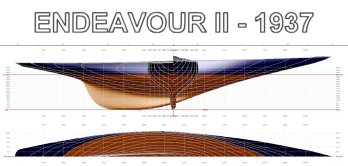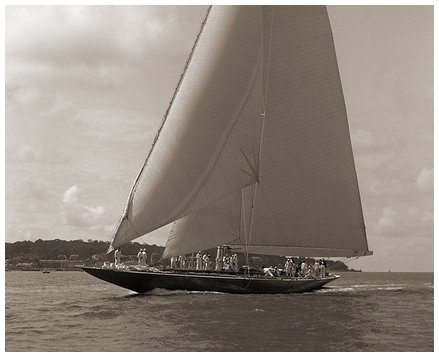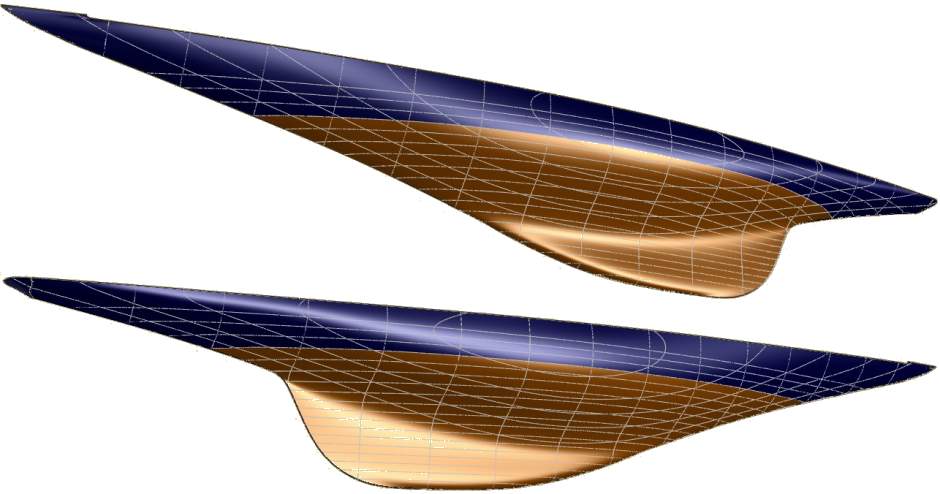Yves GARY Hits: 6790
Category: ENDEAVOUR II
 1937: Unlucky challenger of the sixteenth America's Cup
1937: Unlucky challenger of the sixteenth America's CupIn 1935, after the rejection of the challenge by the NYYC Charles Fairey, Sopwith order a new boat Charles E Nicholson, a J-drift 87 feet waterline length class, the maximum length allowed by the gauge.
Make a better boat that Endeavour will be a difficult task, so Sopwith gets the ...
... privilege to choose his challenger 30 days before the race.

February 1 1936: the building of Endeavour II gets underway with the 90-tonne lead ballast-keel cast in its mould.
The keel and the frames are fitted up; shell plating is flush-jointed over the entire hull rather than clincher-built and is riveted onto the frames and strapping.
The steel centerboard is passed through a shaft in the lead ballast-keel. When lowered, it increases the draft by about seven feet (2.13m).
The deck plan is relatively open and made of Canadian Pine.
The steel mast is made up of 16 longitudinal, arc-welded bands and weighs less than three tones when complete with rigging.
The boom is of the 'Park Avenue' type (triangular section).
In front of the wheels and to starboard of the cockpit is a wind-speed indicator and to port a wind direction indicator. Two water-speed indicators complete the instrumentation.
Tension meters placed in front of the winches measure the settings of the runners.
The building is completed on June 8 and Endeavour II is launched.
|
|
|||||||||||||||||||||||||||||||||||||||||||||||
Download the MODEL FOR DELFTSHIP : Hull only
Download the MODEL FOR DELFTSHIP : Full model

